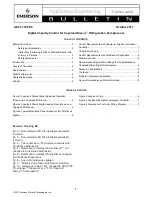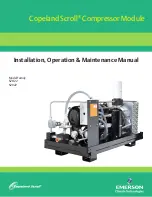
ELECTRICAL CONNECTIONS
Connect the mains lead to a standard, 230 Volt (50Hz) electrical supply through
an approved 13 amp BS 1363 plug, or a suitably fused isolator switch.
WARNING! THIS APPLIANCE MUST BE EARTHED
IMPORTANT:
The wires in the mains lead are coloured in accordance with the
following code:
Green & Yellow
-
Earth
Blue
-
Neutral
Brown
-
Live
As the colours of the flexible lead of this appliance may not correspond with
the coloured markings identifying terminals in your plug proceed as follows:
•
Connect GREEN & YELLOW cord to terminal marked with a letter “E” or
Earth symbol “ ” or coloured GREEN or GREEN & YELLOW.
•
Connect BROWN cord to terminal marked with a letter “L” or coloured RED.
•
Connect BLUE cord to terminal marked with a letter “N” or coloured BLACK.
If this appliance is fitted with a plug which is moulded onto the electric cable
(i.e. non-rewireable) please note:
1.
The plug must be thrown away if it is cut from the electric cable.
There is a danger of electric shock if it is subsequently inserted into a socket
outlet.
2.
Never use the plug without the fuse cover fitted.
3.
When replacing a detachable fuse carrier, ensure the correctreplacement
is used (as indicated by marking or colour code).
4.
Replacement fuse covers can be obtained from your local dealer or most
electrical stockists.
FUSE RATING
The fuse in the plug must be replaced with one of the same rating
(13 amps)
and this replacement must be ASTA approved to BS1362.
We strongly recommend that this machine is connected to the mains supply
via a Residual Current Device (RCD)
If in any doubt, consult a qualified electrician. DO NOT attempt any repairs
yourself.
- 6 -
4. SPRAY GUN MAINTENANCE
1.
Immerse only the front end of the gun until solvent just covers the fluid
connection.
2.
Use a bristle brush and solvent to wash off accumulated paint.
3.
Do not submerge the entire spray gun in solvent because:
a.
the lubricant in the gland packings will dissolve and the packings will dry
out.
b.
the lubricant will dissolve causing harder operation and faster wear.
c.
residue from dirty solvent may clog the narrow air passages in the gun.
4.
Wipe down the outside of the gun with solvent dampened rag.
5.
Lubricate gun daily. Use a light machine oil on:
a.
fluid needle packing.
b.
air valve packing.
c.
fan control packing.
d.
trigger pivot point.
Coat the fluid control spring with vaseline.
Caution: Never use lubricants containing silicone as this may cause finish defects.
For a professional looking finish paint must be thinned. If the manufacturers
recommendations on thinning are not available, the following can be used as a
general guide: Water based paints (emulsions) - 10-20% water
Oil based paints (gloss) - up to 10% white spirit thinners
Cellulose paints - up to 50% cellulose thinners
3. HANDLING THE GUN
The first requirement for a good resultant finish is the proper handling of the gun. The gun
should be held perpendicular to the surface being covered and moved parallel to it.
The stroke should be started before the trigger is pulled and the trigger should be released
before the stroke is ended. This gives accurate control of the gun and material.
The distance between gun and surface should be 6 to 12 inches depending on
material and atomizing pressure. The material deposited should always be even
and wet. Lap each stroke over the preceding stroke to obtain a uniform finish.
NOTE: To reduce overspray and obtain maximum efficiency, always spray with
the lowest possible atomizing air pressure.
- 11 -


























